
Introduction:
This article is an attempt to bring light to a nation founded on battle. Ireland for centuries has fought for their sovereignty and political freedoms. To this day a united Isle is very much far from the case. While it is unfortunate, it should be mentioned that the citizens of Ireland have been born into conflict. Whether it be conflict against the crown of the British, or the bloody crusades that compound between the Republic south and Unionist north, the Irish have fought and continue to fight for all of their existence.
What this piece aims to accomplish is to reverse and reinstate stereotypes perpetuated towards the Irish and Irish descendants. Stereotypes such as the drunk, barbaric, and aggressive Irishman. These are born from a history of consistent cultural metaphors that to this day have an effect on the perception of the Irish. Cultural metaphors are regarded as a system wherein people with the same beliefs, traditions, and or ideologies associate similarly to one another. There are numerous traditions and ideologs within the Irish culture. Traditions that hold strong to this day are pillars in the Irish community. Whether it be Gaelic prayers, ancient Celtic war tales, pub songs and whiskey, or a scrap at the local boxing gym, Ireland will keep you on your toes in order to keep up with their culture.
The Country of Ireland:
Ireland is made up of four provinces with thirty -two counties. The first is Connacht. Connacht is made up of counties on Ireland's western coast. Connacht is home to stunning scenery including a world-famous surfing coast. Many parts of the province retain their extraordinarily strong Gaelic traditions, in particular the Aran Islands. The Irish language is spoken throughout Connacht's Gaeltacht areas. Next is Leinster. In this eastern province, Leinster is home to the Republic of Ireland’s capital city Dublin, originally founded by Nordic Vikings. Today, rarely does a week go by without some form of festival or celebration happening in the city. “Leinster is now the most populated province on the island, with over half the population of the Republic of Ireland living there. The area was heavily colonized over the centuries and, as a result, it is home to many fine examples of medieval, Norman, Georgian and Neolithic architecture.” (Britannica)
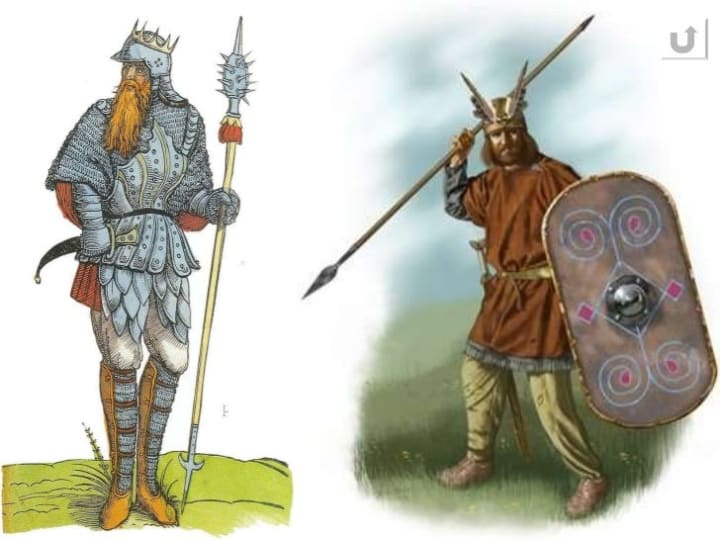
The third province in Ireland is Munster. Two of the largest counties in the country reside in Munster, Kerry and where my family is from, Cork. The final province is arguable the most diverse one. Ulster. Ulster is home to a number of cultures. These combined influences of several different cultures include the Ulster Scots, the Gaels, the Normans, and the Anglo-Normans. These cultures provide a melting pot experience for those who live there.
These four counties create the culture the Isle diverges from. As far as the population is concerned regarding their shared values, religion and languages, these are the numbers; “82.2% of the population of Ireland comprises the ethnic Irish. People from other white, Asian, and black ethnic backgrounds represent 9.5%, 2.1%, and 1.4% of the population, respectively. Both English and Irish are the official languages of the country. English is spoken throughout the island while Irish is spoken by around 39.8% of the population, especially by people living along the western coast of the country. Christianity is the religion of the vast majority of the Irish population. 78.3% of the population comprises of Roman Catholics. Adherents of the Church of Ireland represent 2.7% of the population. Orthodox Christians and Muslims both represent around 1.3% of the population. A significant section of the Irish population of around 9.8% does not claim affiliation to any religion.” (World Atlas)
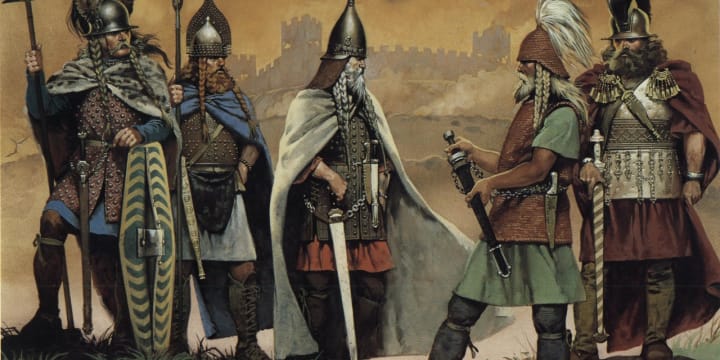
One important and cherished factor in the Irish culture is their language. The Gaelic language is still to this day recognized as the first language of the Isle a head of English. A widely disputed topic on the island, the Irish language is constantly being preserved and brushed up on. “The constitution provides that Irish be the first official language and English the second. All official documents are published in both Irish and English. The modern Irish language, which is remarkably similar to Scottish Gaelic, was widely spoken up to the time of the Irish Potato Famine of the 1840s and the subsequent emigrations. The use of Irish continued to decline even after 1922, when the language was introduced into schools; despite its decline, Irish never ceased to exert a strong influence on Irish consciousness. Although its use as a vernacular has decreased and is concentrated in several small Gaeltacht (i.e., Irish-speaking) areas, Irish is more widely read, spoken, and understood today than it had been during most of the 20th century.” (Britannica) The saying, the Irish have the hearts of poets mends well with the complexity of their native Gaelic tongue. The Irish language holds heavy hearts for those that keep it alive and active throughout their communities. Those natives bear great agony and distain for the British empire whom in their destructive attempt to ride the world of Irish culture and society as a whole, forced the Gaelic language to be eradicated amongst the Isle and was replaced with traditional Anglo-English speaking language.
“Is fearr Gaeilge briste, ná Béarla clíste”
“Broken Irish is better than clever English” (Gaelic matters)
The Irish to this day continue the fight for independence from Great Britain. The current state of the Protestant, Unionist North as a British province creates political divisiveness that hinders the progress for a united Ireland. This conflict is compacted with the religious infighting within the country’s Catholic and Protestant demographics. The bloody Holy war emboldened by men like Martin McGuiness, a Catholic IRA leader and Ian Paisley a Protestant loyalist to the North, the former religious leader of the Democratic Unionist Party. Propaganda along with guerrilla warfare ravished the country for decades into the early 2000’s. These events alone carry the support for the stereotypes of Irish people. Brash, bold, and always ready for a fight.
Metaphor: The Fighting Irish
The University of Notre Dame may have one of the most iconic collegiate mascot name and logos of all time. “The Fighting Irish” depicted as a leprechaun, upright and emboldened with both of his knuckles raised with a snarl to match the vibe. It is brilliant and as the college sport fan that I am, I love it. The whole premise however is spun from the long and chaotic history of the Irish and their continuous fight for independence. The Irish and Americans fought a common enemy in their battle for independence in the British. After the 1916 Easter rising in Ireland which was an attempt to rebel against the British rule in the country during Easter weekend. The leader of this rising Eamon De Vallera would be arrested by British soldiers and would eventually escape to America in 1919. This is where the University gets its name. “In 1916, the Irish freedom fighter and later President of Ireland, Eamon de Valera, visited Notre Dame. de Valera had been part of the 1916 Easter Rebellion against the English in Ireland. After being imprisoned and then granted amnesty, de Valera was arrested by the English again. He later escaped to America, and after attracting a stadium record 60,000 at Fenway Park, he was welcomed as a hero at Notre Dame on October 15, 1919. At that time, admiration for and solidarity with the Irish people by the Notre Dame community reached a zenith.” (Houk)
De Vallera would become a catalyst for Irish participation in the Union’s fight during the civil war. Irish immigration at that time was at an all-time high. The British had created famine throughout the Isle. Religious crusades created a war-torn border. Elis Island became the golden gates for those fleeing the chaos. Unfortunately, those Irish immigrants would face a new form of struggle in a new land with brand new conflicts of its own. Nevertheless, the Irish continued to fight through civil war, prejudice, and discrimination, as well as slavery. “No Irish need apply” was a prevalent store front staple in the early 1900’s. Irish Catholics and traditional Protestants created religious tension with the Anglo-Saxon society already prevalent in America. That fight alone would burden those Irish looking for honest work. The jobs they could find, jobs that no one else would do, would eventually be the jobs that built this great country. This however created conflict with other immigrants about wage disparities. One conflict on American soil that became bloody very fast was during the Mexican American war.
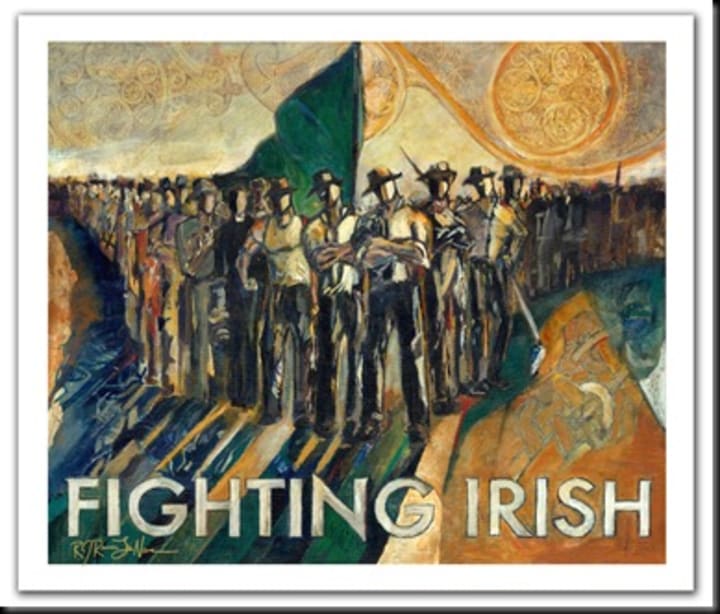
“The Irish filled the most menial and dangerous jobs, often at low pay. They cut canals. They dug trenches for water and sewer pipes. They laid rail lines. They cleaned houses. They slaved in textile mills. They worked as stevedores, stable workers and blacksmiths. Not only did working-class Americans see the cheaper laborers taking their jobs, but some of the Irish refugees also even took up arms against their new homeland during the Mexican-American War. Drawn in part by higher wages and a common faith with the Mexicans, some members of the St. Patrick’s Battalion had deserted the U.S. Army after encountering ill-treatment by their bigoted commanders and fought with the enemy. After their capture, 50 members of the “San Patricios” were executed by the U.S. Army for their treasonous decisions.” (Klein)
Conflict has clearly been nothing new for the Irish. While an unfortunate circumstance, it has become a culturally metaphoric phenomenon regarding the Irish and those of decent. Now, the “Fighting Irish” is pinned athletically more than civilly. One tradition that is not much of a stereotype in retrospect is that of prevalence of Irish prize fighters. The struggle and turmoil of war and political conflict created generations of elite Irish and Irish-American fighting icons. Boxers of old like Mike McTigue, Steve Collins, and Jimmy McLarnin, to current title holders like Tyson Furry and Michael Conlon. The Irish have a long lineage of fighting pride.
Whether it was in the ring, or on the streets of their own counties. The Irish are always ready for a fight. Those will say it is stereotypically driven, but when the history of the pain is dissected, the temperaments can be rationalized. The Irish and Irish Americans today hold their staunch values to their hearts which they wear on their sleeves. History has not been kind to the Irish. That creates a demographic of individuals that grow up on spite. Loathing for a particular enemy for eternity in the British. There is a community that was built from struggle and pain. That community of Irish will continue the remembrance of that victimization in their minds. Which makes conflict all the more bearable for the thickened skin created by the hardened minds of those individuals with Celtic blood. The Irish know how to endure and how to retaliate. They know how to fight. Thus, the Fighting Irish.
Slainte.
Works Cited
- Gaelic Culture and Gaelic Language. (n.d.). Retrieved November 13, 2020, from https://www.gaelicmatters.com/
- Nag, Oishimaya Sen. “The Culture Of Ireland.” WorldAtlas, WorldAtlas, 22 Oct. 2020, www.worldatlas.com/articles/the-culture-of-ireland.html.
- Ireland, Geographical Society of. “Early Celtic Ireland.” Encyclopædia Britannica, Encyclopædia Britannica, Inc., www.britannica.com/place/Ireland/Early-Celtic-Ireland.
- Houk, ByPhil. “How The Fighting Irish Got Their Name.” IrishIllustrated.com, 247sports.com/college/notre-dame/Article/How-The-Fighting-Irish-Got-Their-Name-149026778/.
- Klein, Christopher. “When America Despised the Irish: The 19th Century's Refugee Crisis.” History.com, A&E Television Networks, 16 Mar. 2017, www.history.com/news/when-america-despised-the-irish-the-19th-centurys-refugee-crisis.
About the Creator
Benjamin Reese
My degree is in Communications with a focus on Journalism and a minor in Political Science.


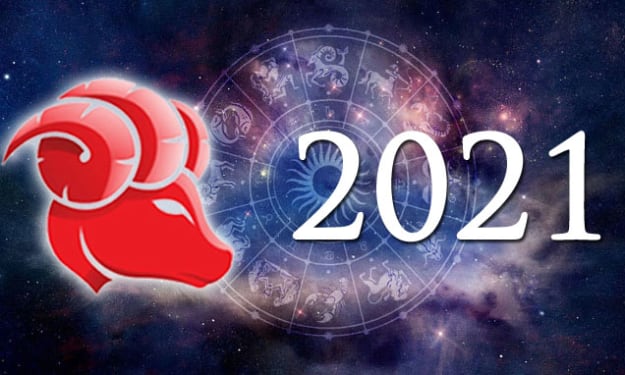

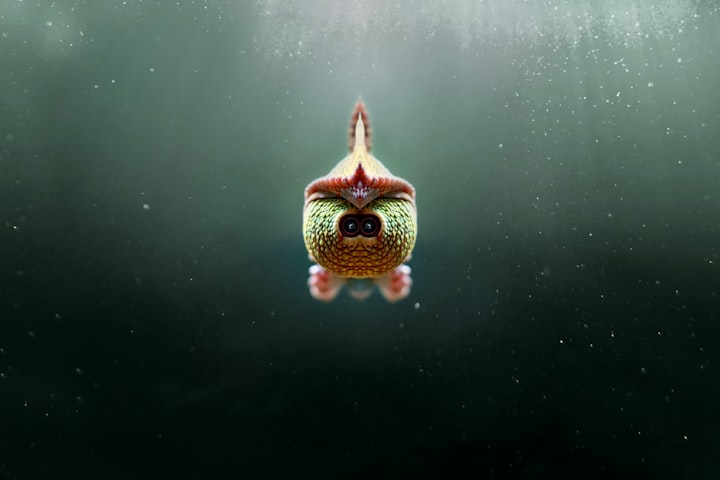

Comments
There are no comments for this story
Be the first to respond and start the conversation.